Abstract
Fortimicin A, a pseudodisaccharide aminoglycoside, was found to have broad-spectrum activity against most clinically important aerobic and facultatively anaerobic bacteria, except Pseudomonas aeruginosa, some other Pseudomonas species, and streptococci. It was comparable to amikacin in its level of activity (minimum inhibitory concentrations) and spectrum of activity (except for the lack of activity on P. aeruginosa). Fortimicin A was bactericidal and was affected by cations when tested against P. aeruginosa. Minimum inhibitory concentrations were affected by the inoculum used in the susceptibility test. The drug was resistant to most aminoglycoside-inactivating enzymes, but probably is not active against permeability mutants.
Full text
PDF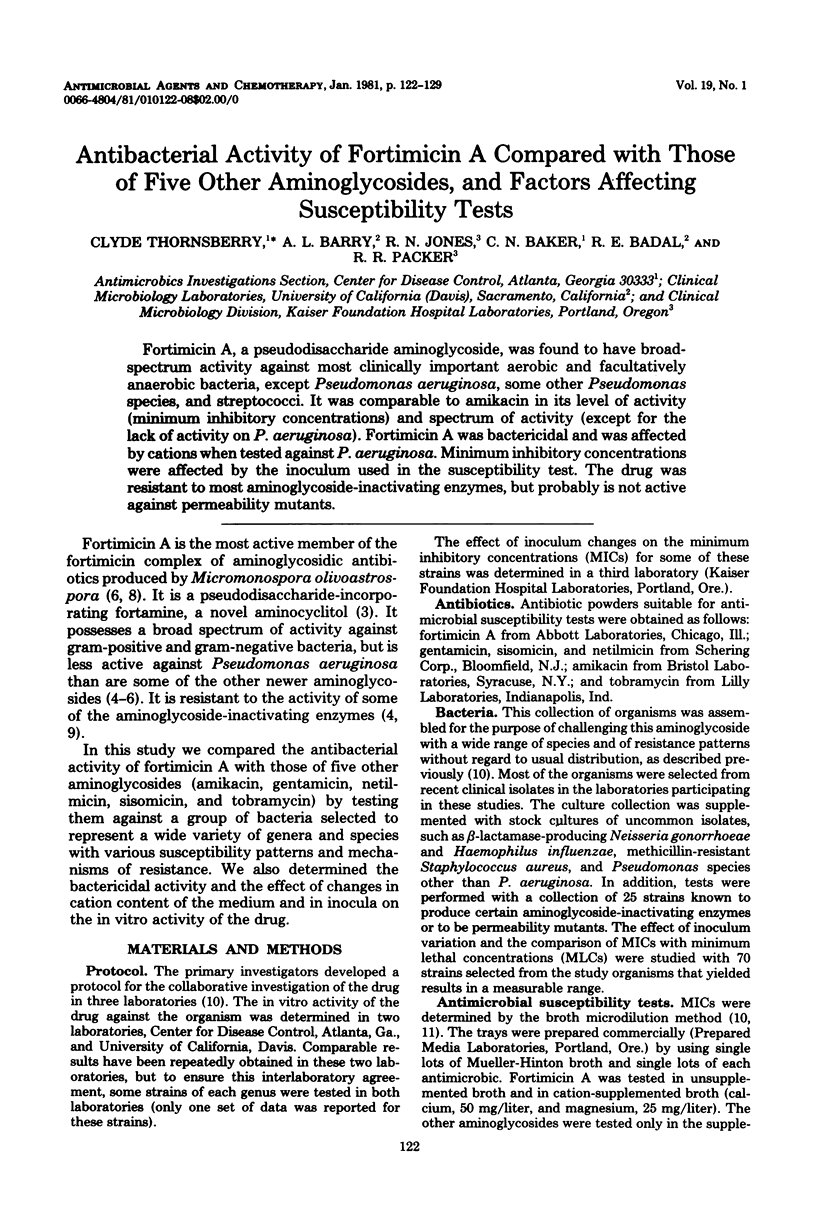
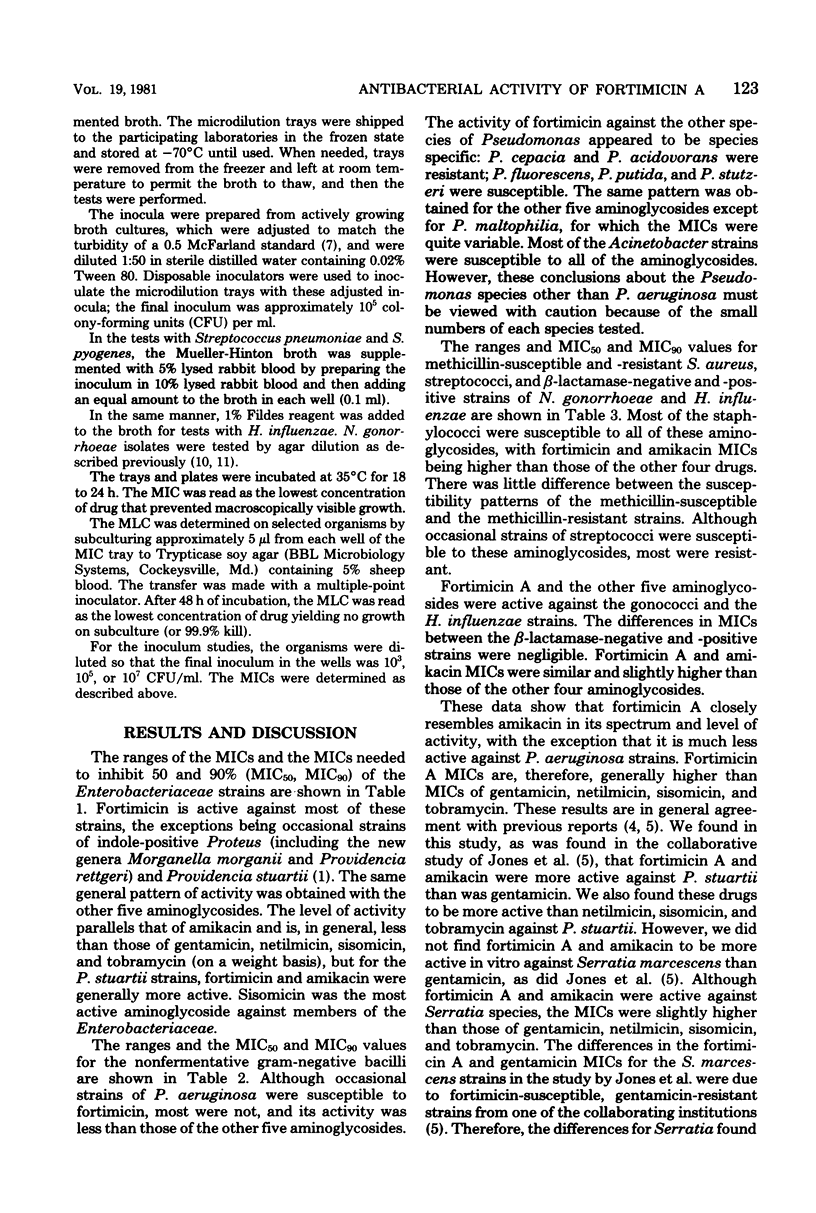
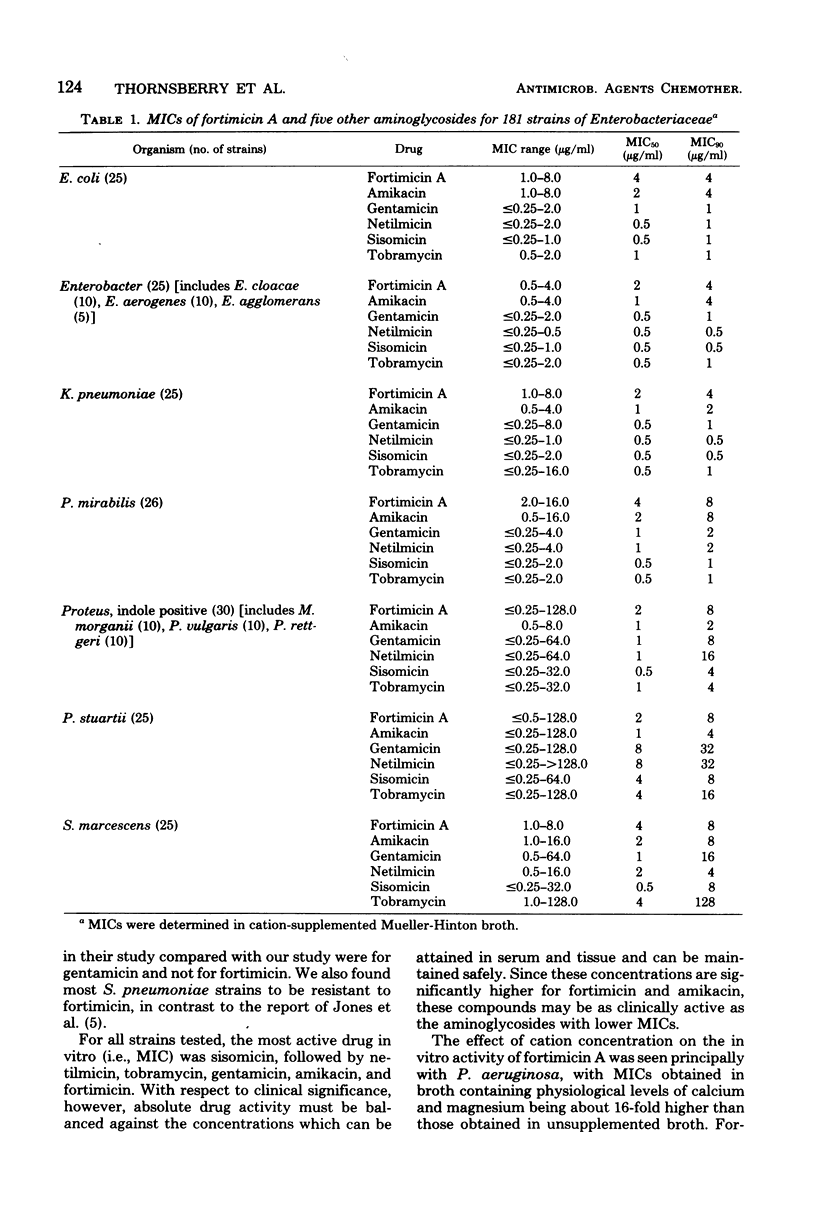
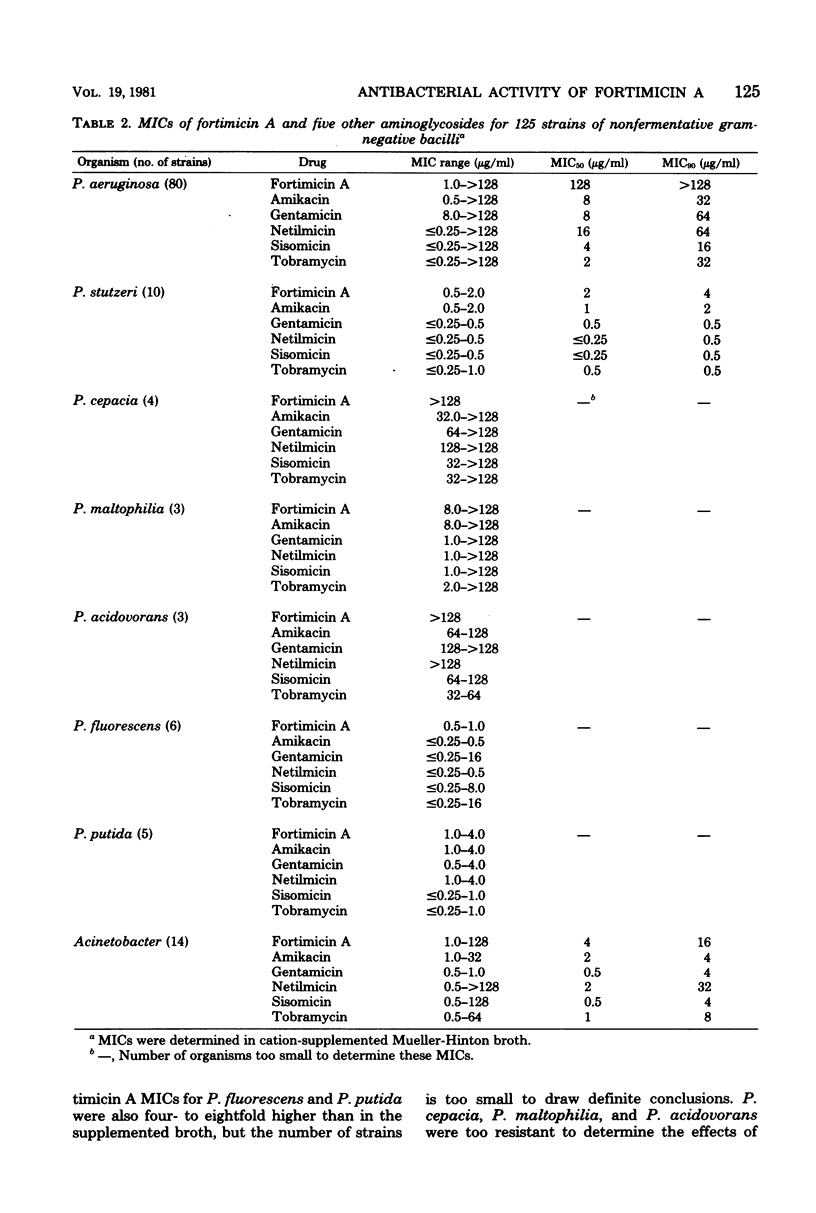
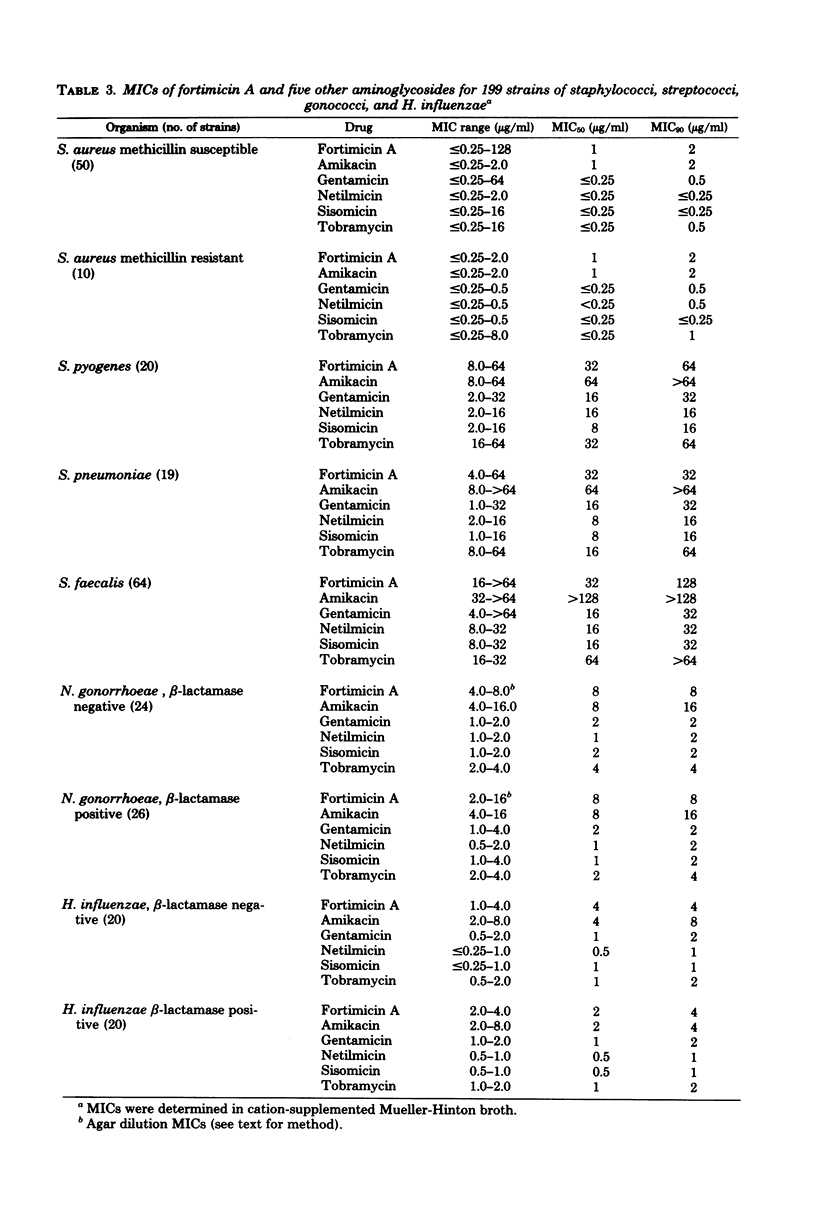
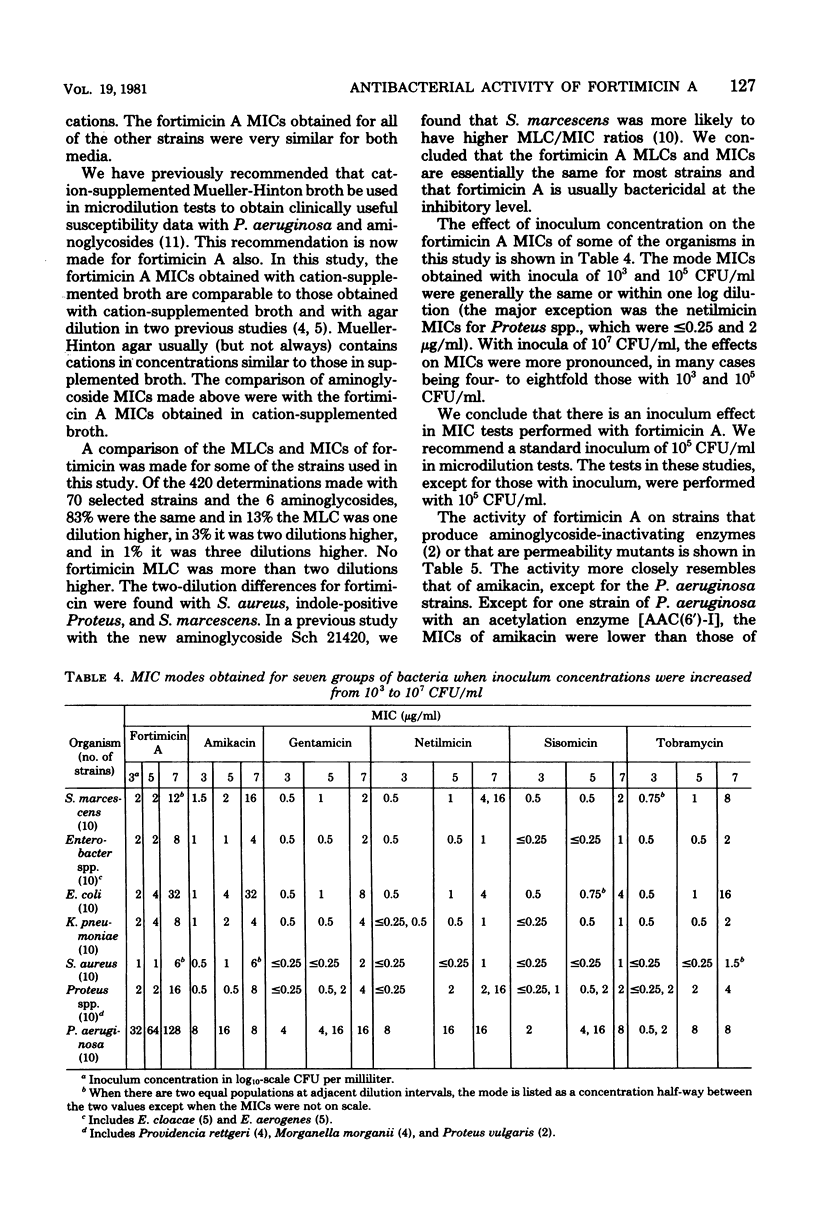
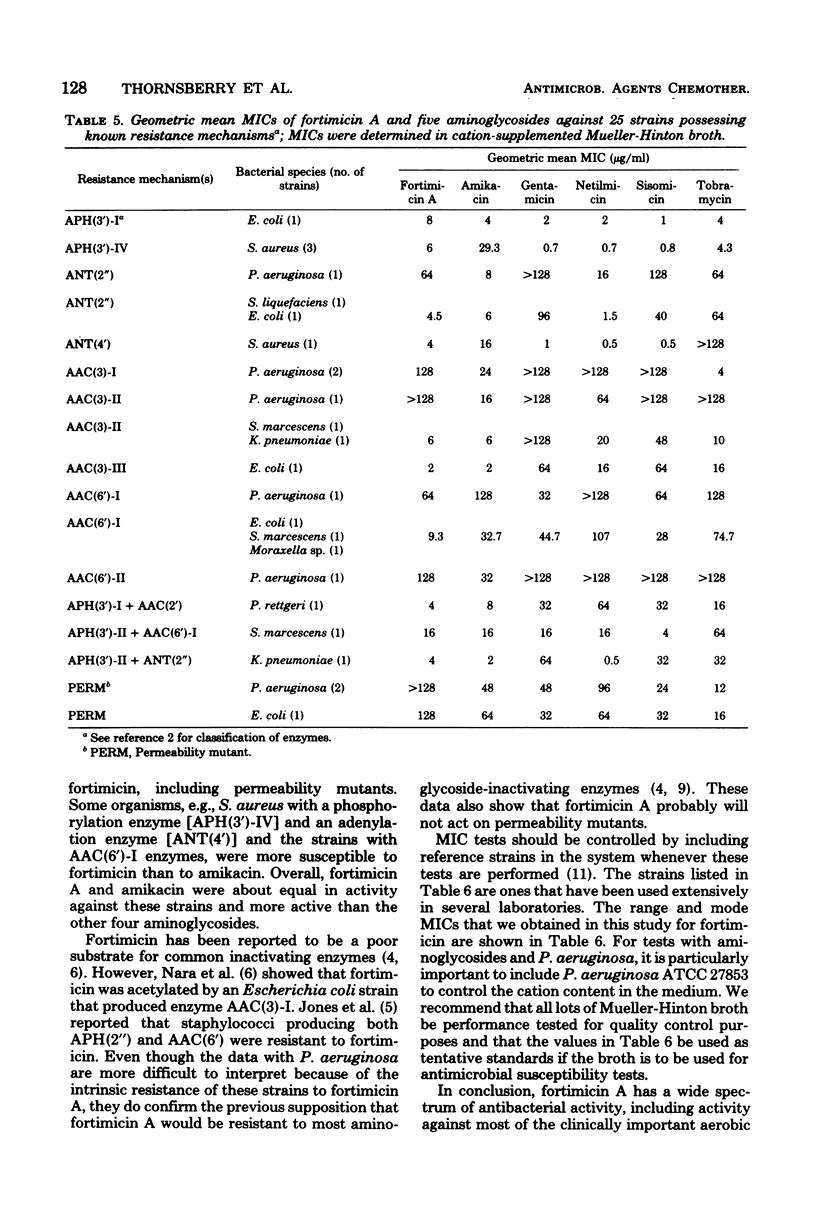
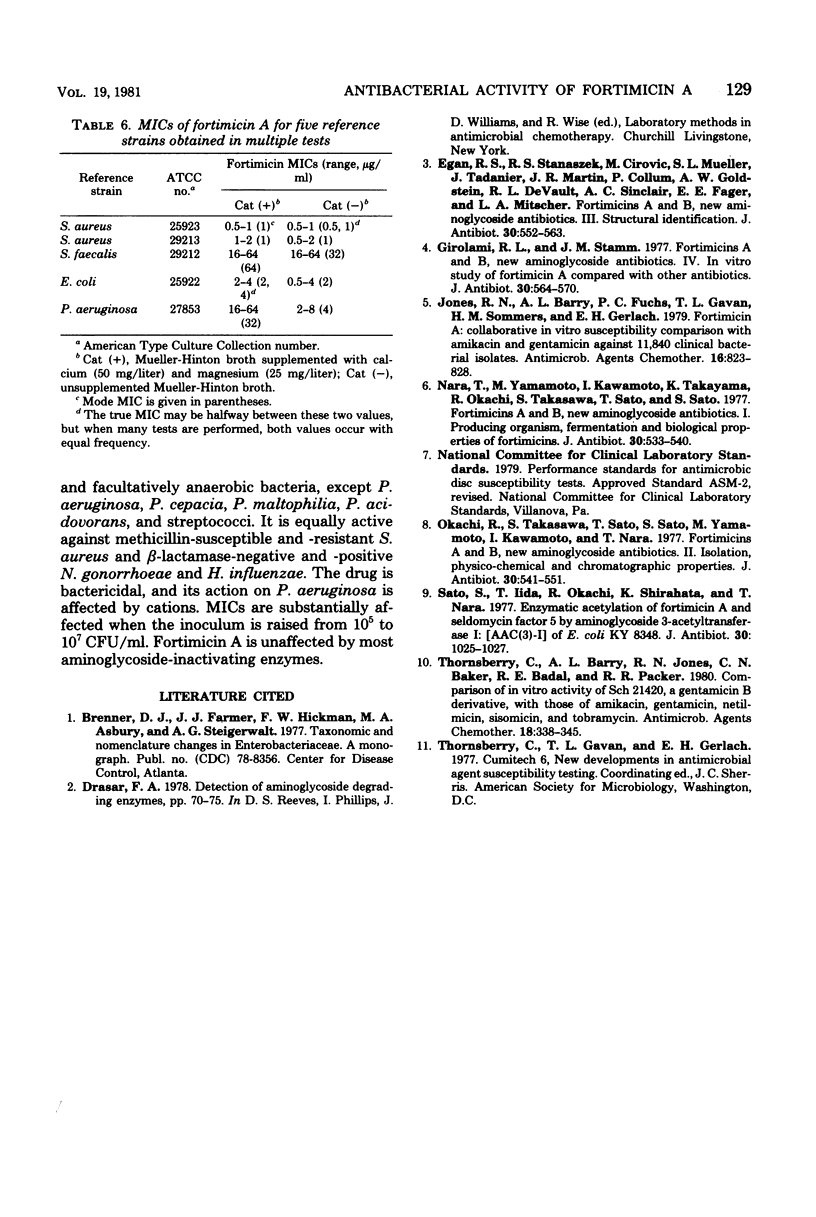
Selected References
These references are in PubMed. This may not be the complete list of references from this article.
- Girolami R. L., Stamm J. M. Fortimicins A and B, new aminoglycoside antibiotics. IV. In vitro study of fortimicin A compared with other aminoglycosides. J Antibiot (Tokyo) 1977 Jul;30(7):564–570. doi: 10.7164/antibiotics.30.564. [DOI] [PubMed] [Google Scholar]
- Jones R. N., Barry A. L., Fuchs P. C., Gavan T. L., Sommers H. M., Gerlach E. H. Fortimicin A: collaborative in vitro susceptibility. Comparison with amikacin and gentamicin against 11,840 clinical bacterial isolates. Antimicrob Agents Chemother. 1979 Dec;16(6):823–828. doi: 10.1128/aac.16.6.823. [DOI] [PMC free article] [PubMed] [Google Scholar]
- Nara T., Yamamoto M., Kawamoto I., Takayama K., Okachi R., Takasawa S., Sato T., Sato S. Fortimicins A and B, new aminoglycoside antibiotics. I. Producing organism, fermentation and biological properties of fortimicins. J Antibiot (Tokyo) 1977 Jul;30(7):533–540. doi: 10.7164/antibiotics.30.533. [DOI] [PubMed] [Google Scholar]
- Okachi R., Takasawa S., Sato T., Sato S., Yamamoto M., Kawamoto I., Nara T. Fortimicins A and B, new aminoglycoside antibiotics. II. Isolation, physico-chemical and chromatographic properties. J Antibiot (Tokyo) 1977 Jul;30(7):541–551. doi: 10.7164/antibiotics.30.541. [DOI] [PubMed] [Google Scholar]
- Sato S., Iida T., Okachi R., Shirahata K., Nara T. Enzymatic acetylation of fortimicin A and seldomycin factor 5 by aminoglycoside 3-acetyltransferase I: [AAC(3)-I] of E. coli KY8348. J Antibiot (Tokyo) 1977 Nov;30(11):1025–1027. doi: 10.7164/antibiotics.30.1025. [DOI] [PubMed] [Google Scholar]
- Thornsberry C., Barry A. L., Jones R. N., Baker C. N., Badal R. E., Packer R. R. Comparison of in vitro activity of Sch 21420, a gentamicin B derivative, with those of amikacin, gentamicin, netilmicin, sisomicin, and tobramycin. Antimicrob Agents Chemother. 1980 Aug;18(2):338–345. doi: 10.1128/aac.18.2.338. [DOI] [PMC free article] [PubMed] [Google Scholar]


